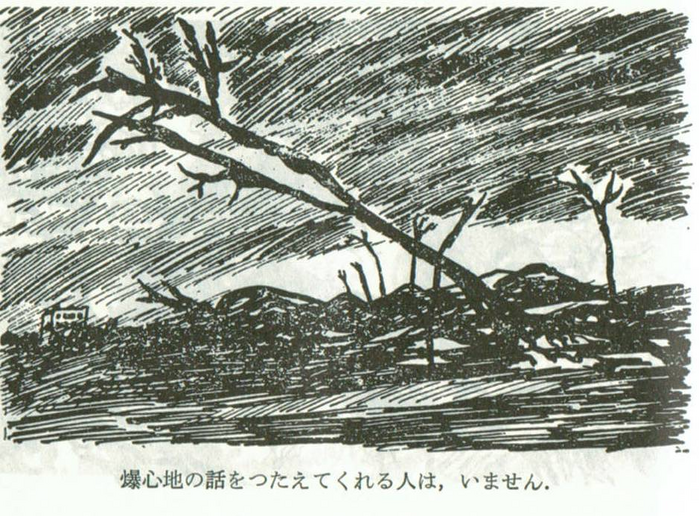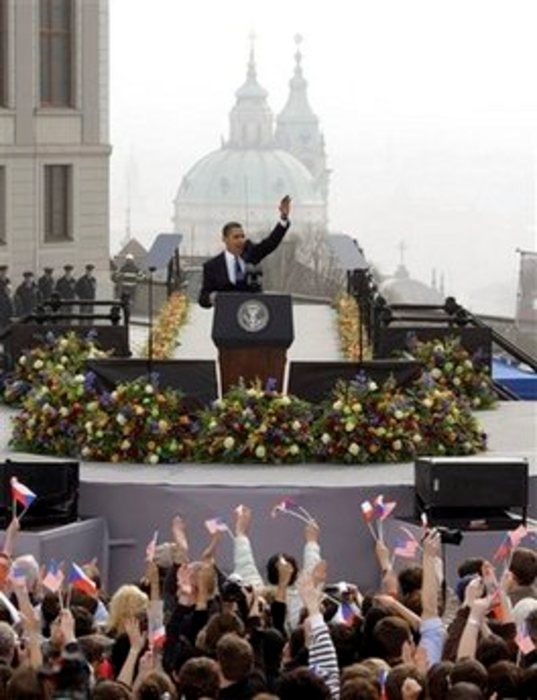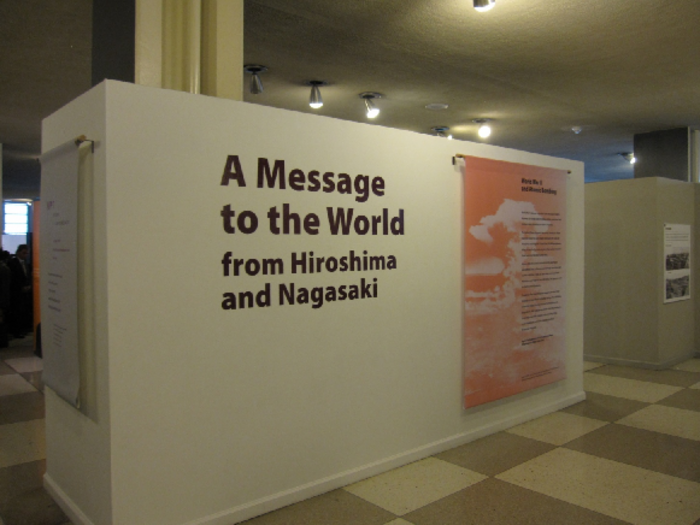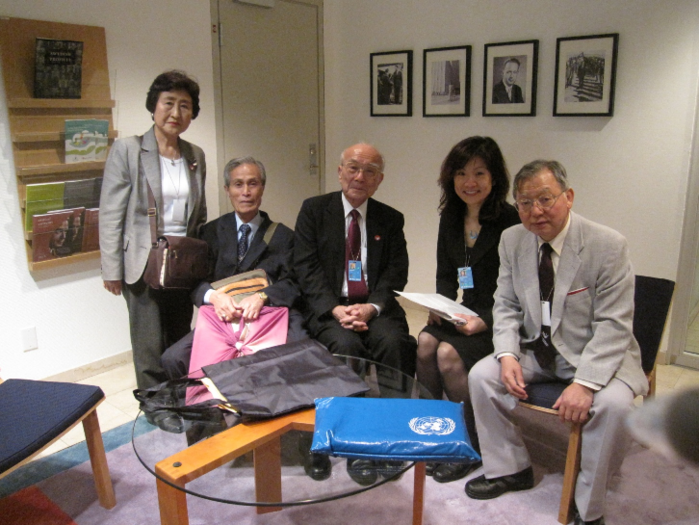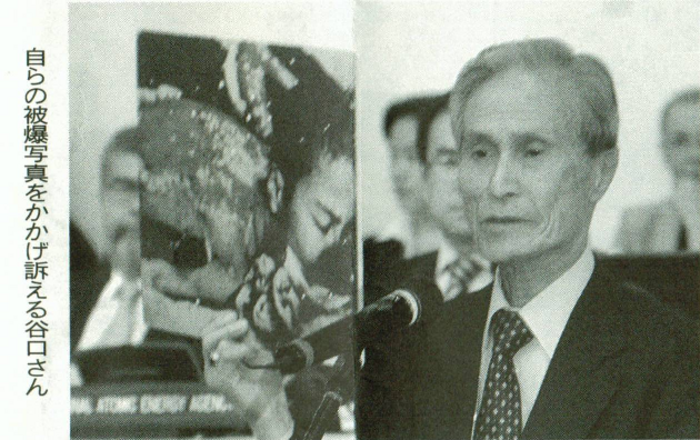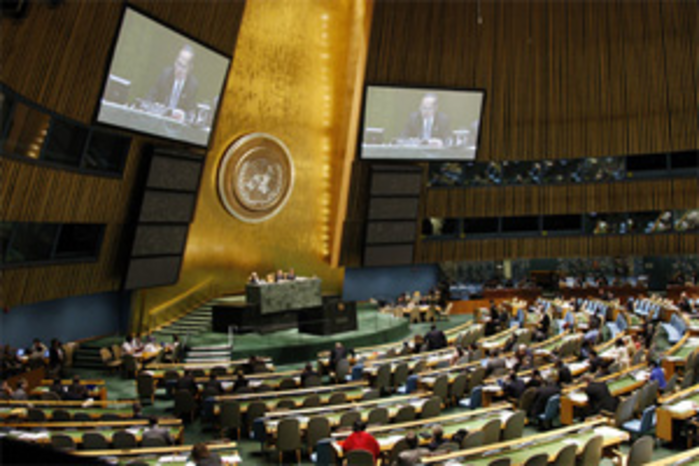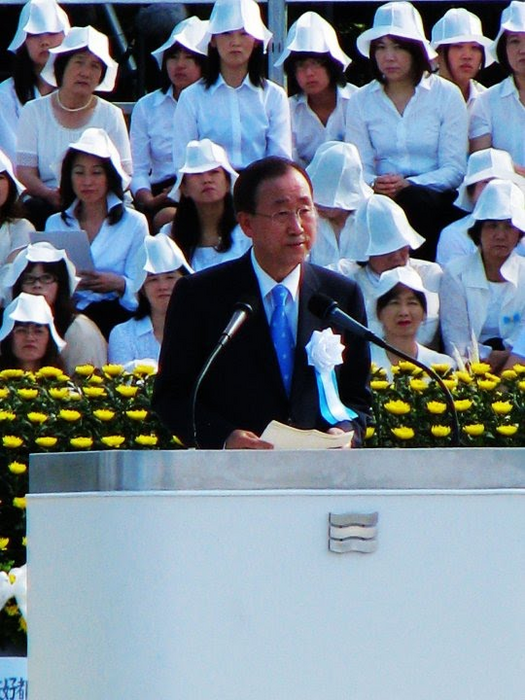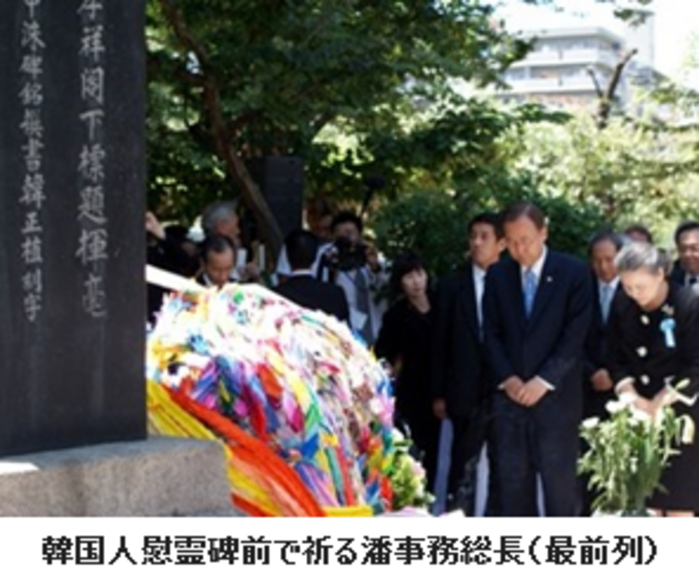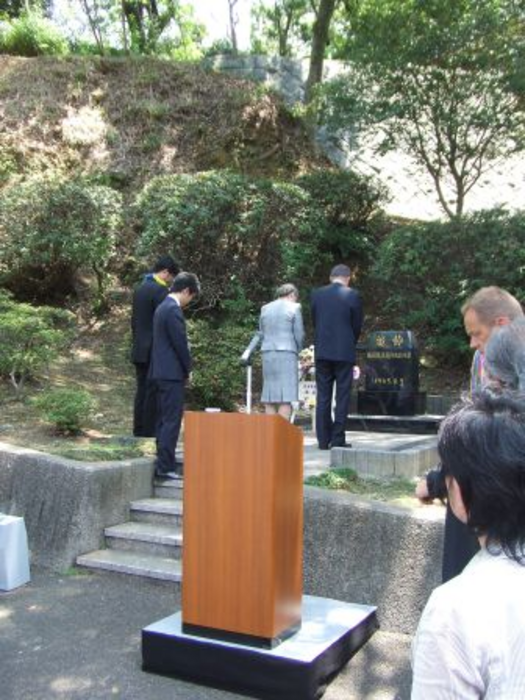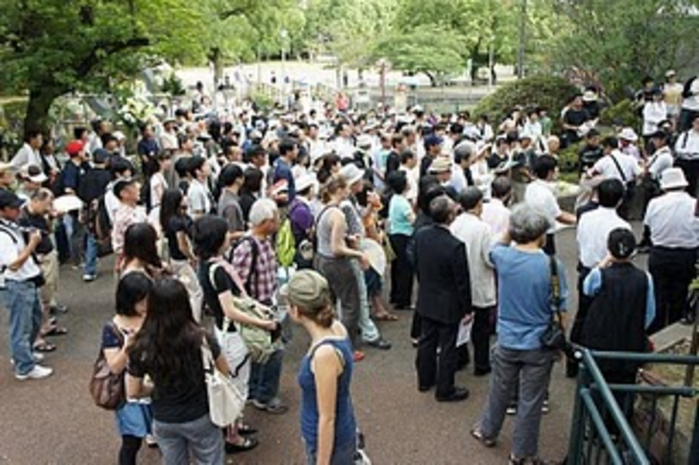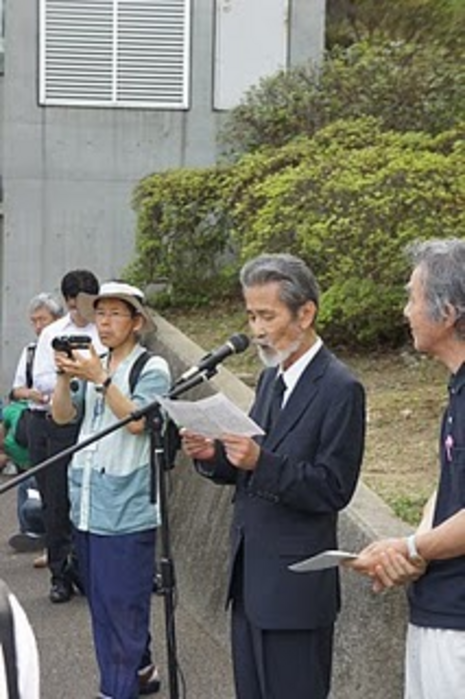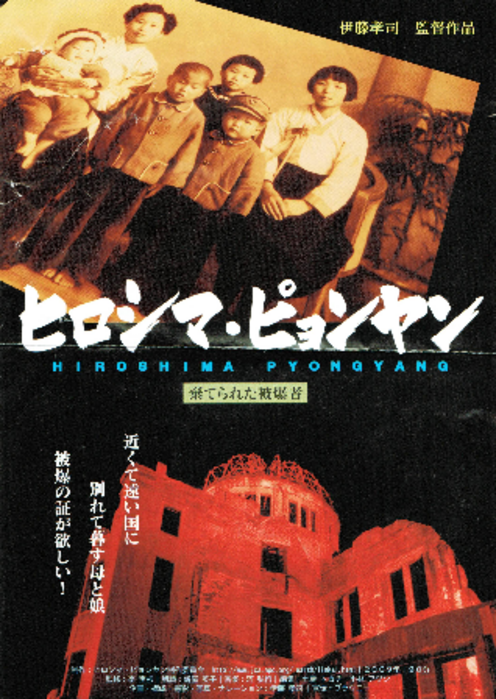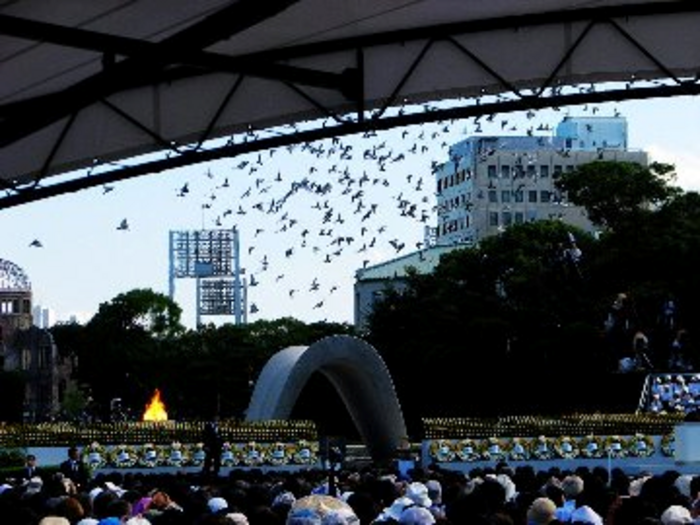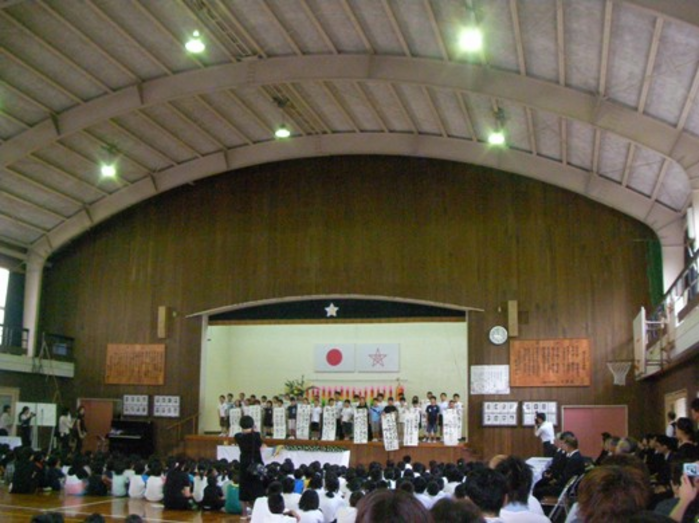Hiroshima and Nagasaki at 65 – A Reflection
Satoko Norimatsu
“There is no one who can tell what it was like at the hypocentre when the bomb dropped.”
– Maruki Iri and Maruki Toshi1
65 years – lives and deaths
On countless occasions this year, sixty-five years after the Hiroshima and Nagasaki bombings, I have heard and read that hibakusha (atomic-bomb survivors) are dying away, and that we need to eliminate nuclear weapons from the face of the earth, for the future of humanity, to be sure, but also so that their dying wishes are fulfilled. Indeed, hibakusha are not getting any younger. The average age of the 227,565 hibakusha who hold atomic-bomb health books as of March 2010 is 76.73.2 On August 6 this year, the names of 5,501 hibakusha who had died during the past year were added to the Hiroshima Cenotaph, making the total number of deaths of Hiroshima’s hibakusha 269,446.3 In Nagasaki on August 9, 3,114 names were added to make a total of 152,276. Adding the death tolls from both cities, the total of Hiroshima/Nagasaki deaths as of August, 2010 was 421,722. The total number of hibakusha, including the living and dead, is at least 649,287, and keeping in mind those unaccounted for, it is probably more. Simply put, approximately, one third of hibakusha survive, speaking and living on behalf of all.
No matter how many years go by, the number of people who were in or under the fiery clouds from the explosion of the two atomic-bombs, the first to be used against people, will always be the same, whether alive or dead. It includes those who perished instantly at and near the hypocentres, as Maruki Iri and Maruki Toshi described above,4 without ever being able to speak or even comprehend their own experience. It is for those dead and living people that we younger generations are acting and speaking on behalf of, and from whom we learn. And having fewer, or even none, of those surviving people will in no way diminish the significance of our actions, our shared memories, and our knowledge, to be inherited by future generations, so that never again will nuclear weapons be used, in combat or in experiments.
In fact, in the minds of the hibakusha, the distinction between death and life is not as clear as we might think, as Robert J. Lifton carefully showed in the first psychological study of the hibakusha, “Death in Life.”5 I have worked, since 2006, as an instructor and coordinator of “Hiroshima, Nagasaki and Beyond,” the annual joint study tour of American University (Washington D.C.) and Ritsumeikan University (Kyoto). During that program, we, some fifty students and faculty members, visit Hiroshima and Nagasaki for three days each, including August 6 and 9 memorials, meeting and hearing from many hibakusha as we travel. One of them, Shimohira Sakue, a Nagasaki hibakusha who was ten years old at the time of the bombing, tells us of the hardship of surviving as an a-bomb orphan with poverty, injury, radiation-caused diseases, and loneliness. “There were two kinds of courage – courage to die; and courage to live. My sister chose the former; I chose the latter,” Shimohira tells us as she speaks of her younger sister, who, in desperation, lay on a railway track and was killed by a train, eleven years after the bombing.
|
Shimohira Sakue telling her story near Nagasaki’s hypocentre to a group of US, Japanese, Canadian, Korean and Chinese students |
Every summer since 2006, four hibakusha and I have a “reunion” in Tokyo after the visit to Hiroshima/Nagasaki. The four were delegates of Hidankyo,6 the national organization of nuclear-bomb victims, to the World Peace Forum held in Vancouver in 2006, in which I participated as a member of a local Article 9 group. Talking about “survivor’s guilt,” Ono Reiko, a retired early childhood educator and a Nagasaki hibakusha, said, “I think the feeling is a little different from ‘tsumi’ (Japanese word for ‘guilt’). It is a sense of ‘ikiteite moshiwake-nai’ (I am sorry to be still living).” I took that as a “sense of owing,” meaning the survivor does not feel s/he deserves his or her life, which should have been possessed by those who died. Just as many Japanese literally apologize when they are actually thankful, many hibakusha are thankful for their lives and are making the best of them for the cause of nuclear abolition and peace.
|
From right – Ono Reiko, Iwasa Mikiso, Terasawa Shigeru, hibakusha delegates to Vancouver’s Peace Forum 2006,7 with the author near Hidankyo’s office in Tokyo |
Iwasa Mikiso, a retired law professor and a Hiroshima hibakusha is one of them. At age 16, he was blown away by the bomb blast in the backyard of his house. His mother was trapped under the collapsed house, and unable to help her, Iwasa had to run, as fire quickly devoured the house. During the Peace Forum I produced “Chichi to kuraseba (The Face of Jizo)”, the late Inoue Hisashi’s play in which a dead father’s spirit appears in front of his daughter who survived the bomb. The daughter was struggling with the pain and guilt, after surviving in a situation similar to Iwasa’s – having to flee, leaving her father behind.
To the daughter who resists finding happiness in life, the father “ghost” yells,
Takezo (Father): Listen to me, will ya! When you were next to me then, didn’t you just cry and tell me how inhuman it all was, how horrible, that we had to part like that? Remember? Didn’t I say to you, “A parting like this should never happen again, till the end of time. It’s not human.” Were you able to hear my last words, Mitsue? “Live. Live my life for me too!” So, you see, you will go on living because of me.
Mitsue (Daughter): Because of you?
Takezo: Yes. Go on living so that the world will remember that tens of thousands of people have had to say goodbye like that and it’s inhuman…”8
Having Iwasa in the audience made me feel special, but also nervous at the same time. Who am I doing this, as if I knew anything? After the play, Iwasa told me, with his usual subtle, gentle smile, “I wish my mother would appear in front of me, like in the play.” I could only respond with silence. The dead are speechless. Since then, I have always been conscious of the dead, and their unborn children and grandchildren. In that way, they are not silent. They are in the background of everything I do, and I listen to them.
Hope of Prague 2009, to New York 2010
Iwasa was one of about one hundred hibakusha who came to New York to urge action by the UN Nuclear Non-proliferation Treaty Review Conference, held from May 3 to 28, 2010. It was unprecedented that so large a number of hibakusha gathered at one place outside of Japan. They were getting old, and many came expecting it would be their last chance to participate in an overseas conference calling on state leaders to abolish nuclear weapons. With knowledge of the utter failure of the previous conference of 2005, in which no final agreement was reached, the hibakusha were particularly hopeful this year. Since April 5, 2009, when US President Obama delivered the “Prague Speech,”9 in which he expressed a will to act for a “world without nuclear weapons,” the expectation has grown that the US, with a giant share of the world’s nuclear arsenals (with Russia over 95% of the world total),10 finally had a leader who was serious about nuclear disarmament. Obama became very popular in Japan, and many campaigns sought to invite him to Hiroshima and Nagasaki. Hiroshima’s Mayor Akiba Tadatoshi started a campaign called “Obamajority,” with the intent of making Obama’s “nuclear-free” message the majority view. “Obamajority” T-shirts sold fast at the Hiroshima Peace Memorial Museum’s bookstore.11 With this speech, Obama became the first president of the United States to express the “moral responsibility” of the US to act, as “the only nuclear power to have used nuclear weapons.” While was hardly a direct expression of responsibility towards the atomic bombing of Hiroshima and Nagasaki, it was a courageous step forward for a US leader to put the notion of “responsibility” and the act of using nuclear weapons in a single sentence.
|
Obama speaking in Prague, April 5, 2009 |
This May, the hundred hibakusha were active in New York. For the first time, Hidankyo hosted a large A-bomb panel exhibit in the U.N. Headquarters’ Visitor Centre’s lobby, which ran from May 3 to the end of June. Hibakusha took turns attending the exhibit, answering questions and telling their stories to visitors. Hidankyo representatives met with Secretary General Ban Ki-moon, and wrote to all 192 member states of the U.N. requesting to visit their U.N. mission’s offices. They were able to visit seven of them – Brazil, Malaysia, Japan, New Zealand, Sweden, and surprisingly, two nuclear weapon states, Russia and France. In fact, France did not respond, but French anti-nuclear activists who were in town for the conference brought Hidankyo delegates to their representative’s office, and a meeting took place.
|
A-bomb Exhibit at UN Visitor Centre Hidankyo Executives at UN Swedish Mission12 |
The hibakusha visited forty schools, telling their stories to local students. Another group of over one hundred people served as local volunteers, most of them bilingual Japanese-Americans, who contributed as translators and helpers for hibakusha during school visits, demonstrations, and conferences. The hibakusha, local volunteers, and international activists shared a real sense of camaraderie. The highlight of hibakusha activism in New York was the rally and demonstration held at Times Square on May 2 by volunteers and sponsors of peace and anti-nuclear organizations around the world.13 The rally with speeches and music went on for almost two hours under the strong sunshine. Unfortunately, there was no translation provided for hibakusha, most of whom did not understand English. Many were tired and dehydrated towards the end of the rally. Some had multiple medical conditions. Being one of the volunteers bringing water to and fanning the hibakusha, I asked Iwasa Mikiso if he and others were okay. He laughed and said, “We are okay. Hibakusha are patient.”
|
Anti-Nuclear Rally and Walk, from Times Square to UN on May 2, the day before the NPT Review Conference (Photo from Hidankyo Shimbun, June 6, 2010) |
ALL media from Japan; NO media from US
At 3 p.m., finally everyone got up and started our peace walk. It took about an hour from Times Square to the park in front of U.N. Headquarters. The demonstration was attended by 15,000 people, according to the organizers. What was astonishing was that no US media seemed to be present, while most, if not all, of the major national broadcasters and newspapers from Japan, including those from Hiroshima and Nagasaki, were there. It was quite a sight to see a flock of ten to twenty, mostly young (20s, 30s) reporters from Japan chasing hibakusha and Japanese politicians from place to place. For reports in the English language, we must rely on blogs and alternative media, but filmmaker Bill Day’s clip14 conveys a good sense of the event. Chuck Overby, a former Korean War B-29 pilot, retired engineering professor, and founder of the Article 9 Society in the US, who appears in this clip (around 15:00) with an Uncle Sam costume and a sign that says, “I Nuked Japan,” wrote me afterwards:
I was and am still terribly angry and appalled at the obscenity of no newspapers coverage of our May 2nd protest march. I still cannot believe it. My anger and frustration at this 800 foreign military based corporate bottom line dominated profligate global warming consumption empire of ours, the USA — leaves me sadly frightened. No newspaper in America covered our May 2, 2010, 15,000 person, international NPT protest march….I even had our Ohio University Reference Department do a newspaper search for newspaper reports in May 3rd and 4th newspapers across America…. In America when some celebrity clown like Tiger Woods gets his penis lost in a non-wifely vagina — we read, see, and hear about it for months on end, but when 15,000 people do an NPT protest march about something really important for all humanity — our US media is totally silent.
|
Chuck Overby at the New York demonstration – go here to see this clip (Chuck after 15:00 minutes)15 |
Of course, media aside, hibakusha had a strong impact in the UN Conference. Taniguchi Sumiteru, a Nagasaki hibakusha, was the sole hibakusha representative to give a speech at the NGO Presentations on May 7, along with other prominent international activists including Jody Williams, Rebecca Johnson, and Akiba Tadatoshi.16 The Japanese government was heavily criticized by hibakusha and activists during the month of the NPT, for sending neither the Prime Minister nor the Foreign Minister to New York, and for taking no visible leadership over the NPT process, despite Prime Minister Hatoyama’s pledge to do so at the U.N. Security Council Meeting in the fall of 2009.17 The only Japan-initiated achievement of the NPT was the May 11 joint statement stressing education for non-proliferation and disarmament, signed by 42 countries including Russia and Germany.18
|
Taniguchi Sumiteru speaking to NPT delegates, May 7, 2010. Aged 16 at the time of the bombing, he was bed-ridden for nearly two years after suffering severe burns on his back. (Photo from Hidankyo Shimbun, June 6, 2010) |
In the months leading up to the NPT Review Conference the atmosphere concerning global nuclear disarmament seemed to warm. Obama’s Prague Speech was followed by his leadership in the UN Security Council Resolution 1887 in September 2009,19 a new Nuclear Posture Review,20 a START renewal between Russia and US,21 and the Nuclear Security Summit, in April 2010.22
The NPT Review Conference 2010 is too complicated to summarize in a paragraph or two,23 but at least a final document was produced, albeit a compromise.24 It pressed the five nuclear weapon states to take concrete steps for disarmament, to diminish the role of nuclear weapons, and report back on progress in 2014; it proposed a conference in 2012 to establish a Middle East Nuclear-free Zone; called on Israel, Pakistan, and India to join the NPT and put their nuclear facilities under IAEA safeguards; it also condemned the DPRK for its nuclear tests of 2006 and 2009, and called for its return to the 6-party talks. “Consideration of negotiations on a nuclear weapons convention” was included for the first time, twice, in the document.
|
NPT Review Conference in the General Assembly Hall (Photo from UN website) |
There was general dissatisfaction among non-nuclear states that, during the course of the negotiation, nuclear states refused to set a clear timetable for total elimination of nuclear weapons or to hold a conference for disarmament in 2014 to set a schedule for abolition. The idea of convening an international conference to formulate a roadmap for nuclear abolition, which was in the earlier draft, was eventually removed.25 Nor was the deadline of 2025 sought by 118 nations of NAM (Nonaligned Movement states) for complete nuclear disarmament included in the final document. The plan for a 2012 Middle East nuclear free-zone conference appeared to be the most concrete agreement in the final document, but the US and Israel dissented immediately. Barack Obama “strongly opposed” Israel, the only nuclear power in the Middle East, being singled out.26 (For a summary of media reports and assessments of NPT 2010, see Link.)
Tanaka Terumi, a Nagasaki hibakusha and Secretary-General of Hidankyo reflected:
This conference is a step forward from the 2000 Review Conference. The participating countries cooperated in order not to make the conference fall apart (as it did in 2005). I am dissatisfied with the fact that the concrete schedule for nuclear disarmament, which was in the original draft, was removed, and no clear path for abolition was presented. I want all the participating countries to take more concrete actions.27
Ban Ki-moon, from New York to Nagasaki and Hiroshima
There perhaps has never been a United Nations Secretary General (UNSG) who is as serious and committed to nuclear disarmament as Ban Ki-moon. He was the first UNSG to attend the Hiroshima Memorial on August 6th. In my observation, many who attended the ceremony or heard or read his speech thought that it was the most compelling and sincere of all the speeches. He shared his personal experience in the Korean War as a child, reinforced his commitment to nuclear weapons abolition, recognized hibakusha’s suffering and contribution to the cause of nuclear disarmament, and suggested some concrete steps for disarmament.
|
UN Secretary General Ban Ki-moon at Hiroshima Memorial, August 6, 2010 (Photo by Wu Zhaowei) |
There was something, however, that I was expecting to hear in Ban’s speech and did not–the idea of a Nuclear Weapons Convention (Convention on the Prohibition of the Development, Testing, Production, Stockpiling, Transfer, Use and Threat of Use of Nuclear Weapons and on their Elimination). Such a goal is supported by Ban, as well as by atomic-bomb survivors’ organizations like Nihon Hidankyo, Mayors for Peace, and many other NGOs around the world. It was also mentioned, if rather subtly, in his “five-point plan to rid the world of nuclear weapons.”28 Ban said, “I especially welcome your support for the idea of concluding a Nuclear Weapons Convention,” at the NGO Conference at Riverside Church, on May 1.29 The idea of such a convention was included in the final document of the 2010 NPT Review Conference because of Ban’s strong commitment. But he mentioned it neither in his Hiroshima speech, nor in the opening speech of the NPT Review Conference in New York, on April 30.30
Having been at the Riverside Church on May 1 to hear Ban’s powerful and inspiring speech, I was less excited than others about his address at the August 6 Hiroshima ceremony.31 It may be that he avoided talking directly about the Convention idea at the main UN conference because of pressure from nuclear weapon states, but it is not clear why he would avoid it in his speech in Hiroshima, the city which many regard as the international capital for nuclear abolition movements.
This summer, Ban visited Nagasaki first, on August 5, then Hiroshima on August 6. His being a Korean national added another layer of significance to the visit. 2010 marks the 100th year of Japan’s annexation of Korea, which was the beginning of 35 years of colonization and oppression by Japan. An estimated 50,000 Koreans were affected by the a-bomb in Hiroshima and 20,000 in Nagasaki; of those, 30,000 were killed in Hiroshima and 10,000 in Nagasaki.32 Ban visited the Korean victims’ memorials in both Hiroshima and Nagasaki.
|
Ban Ki-moon dedicating flowers to Korean victims of Hiroshima A-Bomb, August 6, 2010 (Photo From One Korea Daily News) |
In Nagasaki, there was controversy, though probably less known than there should have been. In his message to the Korean hibakusha of Nagasaki, Ban stated that the number of Korean deaths was 2,000, a number provided by Nagasaki City. Takazane Yasunori, Director of the Oka Masaharu Memorial Peace Museum and Chair of the Nagasaki Association for Protecting Human Rights of Korean Residents in Japan, immediately issued a counter-statement, pointing out that the Association’s thorough research shows that the number of victims is about 10,000. He also urged Ban to call for abolition of invasive wars, not just of nuclear weapons, based on the fact that the Korean victims “were victims of Japan’s invasion and colonization of Korea,” not just of a nuclear weapon. Takazane believed that Mr. Ban’s act of “paying tribute and dedicating flowers to the monument implicitly had that meaning.”33
|
Ban Ki-moon visiting the Nagasaki Korean Memorial on August 5 (photo from the blog of Oka Masaharu Memorial Nagasaki Peace Museum) |
Korean Memorial in Nagasaki
Every year on the early morning of August 9, a memorial gathering for Korean victims is held in front of the monument, located near the edge of the Nagasaki Atomic Bomb Hypocenter Park. Our Hiroshima/Nagasaki Peace Tour group always visits this memorial at 7 a.m., before proceeding to the Shiroyama Elementary School memorial and Nagasaki City’s main ceremony. The monument was built in 1979 with donations collected by the Nagasaki Association for Protecting Human Rights of Korean Residents in Japan. This year, attending the ceremony for the fourth time, I had the impression that the crowd was particularly large, perhaps around 400 people, compared to 200 or so in previous years. This could be related to the 100th anniversary of annexation, and Ban’s visit to Nagasaki.
|
Memorial gathering for Korean victims of Nagasaki atomic bombing, August 9, 2010 |
Takazane Yasunori, in his keynote speech, stressed the illegality and unjustifiability of the “Japan-Korea Annexation Treaty” of 1910. He pointed out there is crucial lack of consciousness in Japan about its responsibility for the division of Korea, and condemned the Japanese government for continuing to implement policies that reinforce division and hostility in the Korean Peninsula. He also criticized the Japanese government’s continued alienation and discrimination against Korean residents-in-Japan (Zainichi), particularly the exclusion of Korean schools from the tuition subsidy program for high school students. Referring to the unresolved issues of military sex slavery and forced labour, he called on the government to legally recognize its responsibility and to provide individual compensation to Korean war victims.34
|
Takazane Yasunori, Director of the Oka Masaharu Memorial Nagasaki Peace Museum, which focuses on Korean and Chinese victims of Japan’s aggressive wars, delivers keynote speech at the Korean victims’ memorial, August 9, 2010 |
The Korean memorial in Nagasaki complements and deepens the mainstream discourse on the experience of atomic bombing, which is symbolized by frequent Japanese reference to the nation as “the only country in the world that suffered atomic-bombing.” Suh Jung Woo, a Korean hibakusha, told of being forcefully mobilized at age 14 to work at a coal mine in Hashima (also known as Gunkanjima) off the coast of Nagasaki,35 where extreme working conditions led him to think of killing himself many times. He was transferred to Mitsubishi Shipbuilding in Nagasaki, where he was exposed to the atomic bomb.36 For him, even worse than forced labour and a-bomb injuries was the harsh discrimination he experienced as a Korean, including that by Japanese a-bomb patients at the hospital. Surviving decades of diseases, poverty, and discrimination, he died in 2001, leaving the words, “The atomic bomb burned away everything, but it could not burn away discrimination.”37
Non-Japanese victims of the bombs, of whom 80 per cent are said to be Korean, were long denied access to the government relief measures provided to Japanese victims. After decades of protest by Korean and other overseas victims and their supporters, the situation has now changed, and overseas hibakusha are no longer required to come to Japan to apply for benefits. There is, however, one group that is completely excluded from benefits: hibakusha in the DPRK (North Korea). One of Takazane’s demands for the Japanese government is to “pave the way for the Atomic Bomb Victims’ Relief Law to be applied to the victims living in the DPRK.” A study completed at the end of 2007 confirmed that 1,911 hibakusha had been living in the DPRK, but already by that time 1,529 had died, and only 382 survived.38 Three years later, the number of survivors must have further declined. Doctors of Hiroshima Prefectural Medical Association have been sending delegates to learn about the conditions of hibakusha in the DPRK. Many political obstacles have thwarted or slowed efforts to find and treat hibakusha there, from the lack of diplomatic relations between Japan and DPRK to the abduction issue to the recent sinking of a South Korean warship.39 The 2010 film “Hiroshima, Pyongyang,” directed by Japanese filmmaker Ito Takashi, sheds light on this issue. It features Hiroshima survivor Lee Kye-son, living in Pyongyang, and her long-separated mother in Japan, unable to meet because of Japan’s ban on exchanges with the DPRK.40
|
“Hiroshima, Pyongyang” poster |
Japan – a nuclear-abolitionist country firmly committed to nuclear deterrence
Besides Ban Ki-moon’s attendance, what distinguished the 65th anniversary Hiroshima ceremony was the presence of representatives from three nuclear-weapon states: the US, France, and Britain. For the first time since I started attending the ceremony in 2006, the program came with a list of about seventy participating countries. My understanding is that the organizers wanted to acknowledge the presence of US Ambassador John Roos, since he was not to deliver a speech at the ceremony. Roos issued a faxed statement that said, “for the sake of future generations, we must continue to work together to realize a world without nuclear weapons.”41 US Secretary of State Hillary Clinton also made a remark at the press conference on August 5, “With respect to Hiroshima and the anniversary of the atomic bomb, this President, President Obama, is very committed to working toward a world without nuclear weapons…And I think that the Obama Administration and President Obama himself believed that it would be appropriate for us to recognize this anniversary and so has proceeded to do so.”42 It was rare, and probably unprecedented, for a US Secretary of State to specifically comment on Hiroshima on the anniversary day.43 The world media paid special attention to the fact that the US attended for the first time – with CNN, BBC, Aljazeera, Korea’s Yonhap News, China Central Television, and Russia’s ITAR-TASS, all reporting this.44
|
Doves released at Hiroshima Memorial Ceremony (photo by Wu Zhaowei) |
With this world attention, Hiroshima Mayor Akiba Tadatoshi stepped forward and his Peace Declaration speech clearly called on Japan to “abandon the US nuclear umbrella.”45 The word used in the Japanese version, “ridatsu,” means “to depart from” or “to get out from,” so the use of “abandon” in the English version must have sent a strong message to Tokyo and Washington. At the Hiroshima ceremony, Prime Minister Kan Naoto affirmed his support for the peace constitution and the three non-nuclear principles, but right after the ceremony, he held a press conference and said, “Deterrence by nuclear weapons is still important for our country.” Foreign Minister Okada Katsuya also held a press conference on returning to Tokyo from Hiroshima. He stated, “It is extremely difficult to secure safety of Japanese people without the nuclear umbrella of the United States. My view is different from that of Mayor Akiba.” Hibakusha were angry, as were citizens of Hiroshima, Nagasaki and beyond who look to the Japanese government to take the lead in nuclear weapons abolition.46 The fact remains, however, that Japan’s anti-nuclear posture rests firmly on reliance on the US nuclear umbrella. In the new “National Defense Program Outline” issued on December 17, the Japanese government reinforced this stance by stating it “will continue to maintain and improve credibility of U.S. extended deterrence, with nuclear deterrent as a vital element, through close cooperation with the U.S.”47
Prague’s hope betrayed?
Shock waves swept through Hiroshima and Nagasaki when it was learned on October 12 that just one month earlier, on September 15, 2010 the US had conducted a subcritical nuclear test at the Department of Energy’s test site in Nevada. It was the 24th US test since 2006, but the first under the Obama administration. While US media were again astonishingly silent on this issue, Japanese media criticized the test “as a manifestation of US policy oriented toward retaining a strong nuclear arsenal for a long time to come.”48 The test certainly sent a message of betrayal to hibakusha and others who had found hope in Obama’s Prague Speech. Hiroshima’s hibakusha and their supporters staged a sit-in protest in front of the Cenotaph on October 14.49
|
Hiroshima’s protest against the first nuclear test under Obama administration (Photo from Hiroshima Peace Media Center)
|
Tsuboi Sunao, Chair of Hiroshima’s Hidankyo expressed deep disappointment with Obama, saying, “Mr. President, you have betrayed us. I suggest you return your Nobel Peace Prize.” Tsuboi and Nihon Hidankyo sent a letter of protest against the test to the U.S. Embassy in Japan, demanding the start of multilateral negotiations for a treaty to eliminate nuclear weapons.50 Hiroshima Mayor Akiba sent a protest letter, the city’s 232nd letter of the kind,51 to the US, the first since the previous test in August 2006, under the Bush Administration. So did Nagasaki’s Mayor Taue Tomihisa, and Mayors for Peace, an anti-nuclear network of over 4,000 mayors around the world, and many anti-nuclear and peace NGOs in Hiroshima, Nagasaki and beyond.
The US subcritical test was a blow to Hiroshima, host of the “11th World Summit of Nobel Peace Laureates,” held from November 12 to 14. Mikhail Gorbachev and four other Nobel Laureates had encouraged Obama, the Peace Prize recipient of 2009, to attend the summit,52 as Obama was going to be in Japan during that period for the APEC conference in Yokohama, but on October 28, the US announced that Obama would not visit Hiroshima and Nagasaki at this time.53 Takahashi Akihiro, a Hiroshima Hibakusha and former Director of Hiroshima Peace Memorial Museum said, “Obama should not visit Hiroshima unless he expresses regret over conducting the subcritical nuclear test.”54 Takahashi had on four previous occasions sent a letter of invitation to Obama.55
The recent developments of the Obama Administration’s nuclear policies have been sending mixed messages. The US Senate ratified the new START (Strategic Arms Reduction Treaty) on December 22, and with the Russian parliament also voting in favour of the treaty on December 24,56 the two nuclear superpowers are now committed to “the most significant arms control agreement in nearly two decades.” This will restrict both countries to a maximum of 1,550 deployed nuclear warheads, about a 30% cut from the previous limit set in 2002, and of 800 launchers and bombers.57 Hibakusha Tsuboi Sunao, regards it positively even though it is far from the hibakusha goal of nuclear abolition, saying “the failure to ratify it would have had a detrimental effect.”58 Obama, however, made a concession to opponents against the treaty by committing as much as 85 billion dollars for modernization of nuclear weapons and facilities. The loss in the midterm election will pose a further challenge for Obama to take more steps towards his vision of a world without nuclear weapons, including ratification of CTBT (Comprehensive Test Ban Treaty).
Should we be pessimistic? Not necessarily so, and it is certainly not a time for us citizens to give up. The Asahi Shimbun, one of Japan’s national newspapers, conducted a survey in early December, asking people in the US whether Obama should visit Hiroshima and Nagasaki. 51% of the respondents answered “yes,” while 36% responded “no.”59 This shows surprisingly strong popular support for the non-nuclear initiative of the president, who argued against “the old solutions of more weapons and again more weapons” and for “work towards a peace that is genuine, lasting and non-nuclear” in a Columbia University newsletter back in 1983.60 We have a responsibility to continue to support and empower the man who bravely put forward his college-day ideal to the whole world as a president, and at the same time to continue what we each can do as a citizen.
65 years, and our work continues
Novelist and Nobel laureate Oe Kenzaburo, in his column for the New York Times for the Hiroshima Day 2010, wrote of the Hiroshima ceremony as follows: “Of all the official events that have been created during the past 200 years of modernization, the peace ceremony has the greatest degree of moral seriousness.”61 There are doubtless other peace ceremonies throughout the world that carry equal “moral seriousness,” but those in Hiroshima and Nagasaki, which I have attended for the last five years, have embraced me and my whole being in ways unlike any others. I appreciate children’s participation particularly. For me, the climax of the annual study tour is always attending the memorial ceremony at Shiroyama Elementary School in Nagasaki. Over 1,400 of the students and 31 teachers of this school, which is located 500 meters from the hypocentre, died in the atomic bombing. The school has its own peace ceremony and all students attend, though August 9 falls in the summer holiday. Peace meetings are in fact held at Shiroyama Elementary, not just in August; but on the 9th day of every month, and they have been conducted for almost 60 years since 1951.
|
|
Shiroyama Elementary School Peace Ceremony, Nagasaki, August 9
At the August 9 ceremony, school children present their personal “peace messages,” sing the school’s peace song, “Ko ra no mitama yo (To the Souls of Children)” and then play it on recorders. As I listen to the song, I think about these children, and children like them, who burned and perished on this day in 1945 and in the days and months following. That is the moment when all political complexities over the road to nuclear abolition vaporize in plain stupidity. I also see those children in the old hibakusha whom I work with – Iwasa-san, Ono-san, Tanaka-san, Taniguchi-san, Shimohira-san, and many others. They were all children or in early youth in 1945, and their small bodies and hearts were shattered by a single bomb. Shimohira-san, 10 years old and her little sister, 8 years old, went to look for their mother after they survived the bomb blast in an air raid shelter. In the rubble of their house, they found a charred body. When they touched their mother, the body crumbled into ashes.
Oe concludes his Hiroshima day thought:
As for me, on the day last week when I learned about the revival of the nuclear-umbrella ideology, I looked at myself sitting alone in my study in the dead of night . . . . and what I saw was an aged, powerless human being, motionless under the weight of this great outrage, just feeling the peculiarly concentrated tension, as if doing so (while doing nothing) were an art form in itself. And for that old Japanese man, perhaps sitting there alone in silent protest will be his own “late work.”64
For myself, as powerless as or perhaps even more powerless than Oe, what I will do is to keep learning, keep walking, and keep acting, so no child ever has to pick up the charred body of her mother again.
|
Illustration by Iwasaki Chihiro, from Inoue Hisashi’s book, Japan’s Constitution for Children65 |
Norimatsu Satoko, a Japan Focus Associate, is Director of the Peace Philosophy Centre, a peace-education centre in Vancouver, Canada, and Director of Vancouver Save Article 9. She engages youth and community members in learning about Article 9, historical reconciliation in Asia, Hiroshima/Nagasaki and nuclear disarmament, and issues surrounding U.S. military bases in Okinawa. A ten-minute video of the Hiroshima/Nagasaki study tour of American University and Ritsumeikan University, for which she works as an instructor and coordinator, can be viewed at this link. Norimatsu and her colleagues on this peace study tour co-produced “Hiroshima, Nagasaki e no genbaku toka saiko – nichibei no shiten 『広島長崎への原爆投下再考―日米の視点』(Rethinking the atomic-bombing of Hiroshima and Nagasaki – Japan and U.S. perspectives),” co-authored by Kimura Akira and Peter Kuznick, translated by Satoko Norimatsu, columns contributed by Fujioka Atsushi and Satoko Norimatsu (2010, Horitsu Bunkasha).
Recommended citation: Satoko Norimatsu, Hiroshima and Nagasaki at 65 – A Reflection, The Asia-Pacific Journal Vol 8, Issue 52 No 3, December 27, 2010.
Notes
1 Maruki Iri’s illustration in Maruki Iri and Maruki Toshi’s “Pikadon,” Potsudamu shoten, 1950, in Oe Kenzaburo, “Hiroshima Noto,” Iwanami Shoten, 1965, Tokyo.
2 Masuda Sakiko, “Hibakusha no oi susumu zenkoku heikin nenrei 76 sai ni,” Chugoku Shimbun, 31 July 2010.
3 “Kaku no kasa kara ridatsu o,” Chugoku Shimbun (gogai: extended edition), 6 August 2010.
4 Maruki Iri (1901-1995) and Maruki Toshi (1912 – 2000)’s wide-ranging art works on Hiroshima, Nagasaki, Okinawa, Nanjing, and Auschwitz are shown at Maruki Gallery, Saitama. Link.
5 Robert J Lifton, “Death in Life,” Random House, 1967, New York.
6 Nihon Hidankyo (Japan Confederation of A- and H-bomb Suffers Organizations).
7 One of the four hibakusha delegates, Miyake Nobuo, who is not in this photo, told his story before the public reading of the play “Chichi to kuraseba (The Face of Jizo)” in June 2006, in Vancouver. A report can be viewed at Peace Philosophy Centre. Link.
8 Inoue Hisashi, “Chichi to kuraseba (The Face of Jizo),” translated by Roger Pulvers, Komatsuza, 2004. Inoue, a pacifist novelist and playwright and one of the founders of the Article 9 Association, died on April 9, 2010.
9 Remarks by President Barack Obama in Prague, April 5, 2009. Link.
10 Ploughshare Fund, Nuclear Stockpile Report. Link.
11 Akiba’s “Obamajority” campaign, on which the city spent 2,740,000 yen (approx. US $25,000) of taxpayer’s money, has been criticized by some Hiroshima citizens, saying spending Hiroshima citizens’ money to support another government’s (particularly one that dropped the atomic bomb on the city) policy could not be justified. Noda Kanako, “Obamajority ni kokin futo, sishutsu chushi uttae jumin kansa seikyu,” Chugoku Shimbun Hiroshima Peace Media Center, 30 July 2010.
12 From left, Kodama Michiko (Hiroshima), Taniguchi Sumiteru (Nagasaki), Tanaka Terumi (Nagasaki), Author, Kodama Sueichi (Nagasaki)
13 International Conference for a Nuclear-Free, Peaceful, Just, and Sustainable World, New York City, 30 April and 1 May, 2010. Link.
14 Bill Day’s video of NPT March, 2 May 2010. Link.
15 Ibid. Link,
16 NPT Review Conference NGO Presentations, 7 May 2010. Link.
17 Statement by Prime Minister Yukio Hatoyama, at the UN Security Council Summit on Nuclear Non-proliferation and Nuclear Disarmament, 24 September 2009. Link.
18 Joint Statement on Disarmament and Non-Proliferation Education delivered by Akio Suda, 11 May 2010. Link.
19 UN Security Council Resolution 1887 reaffirmed commitment to nuclear disarmament and a shared purpose to create conditions for elimination of nuclear weapons. The significance of this resolution is more in the fact that it was the US that initiated the resolution than its content, which lacked concrete plans. Link.
20 In the 2010 Nuclear Posture Review, the US pledged no first-use of nuclear weapons against non-nuclear states that abide by Non-Proliferation Treaty protocols. It was a step forward in the sense that the US restricted the possibility of its first use, but it explicitly did not rule out the possibility of first-use against countries that did not abide by NPT rules, such as Iran and the DPRK. Link.
21 The new START limits the possession of strategic nuclear warheads to 1,550 for both countries – 30% lower than the previous ceiling. “US and Russian leaders hail nuclear arms treaty,” BBC News, 8 April 2010. Link.
22 The Nuclear Security Summit centered on how to stop the spread of nuclear weapons, its technology and its resources, to terrorists. The participating 47 countries agreed to aim to lock down all vulnerable nuclear material within four years. Link.
23 For an overview of NPT 2010 achievements, criticism and media reports, see Peace Philosophy Centre, 28 May 2010. Link.
24 NPT Review Conference Final Document (VOL.I) Link 1 Link 2.
25 Kanazaki Yumi, “NPT Review Conference closes after unanimous adoption of Final Document,” Chugoku Shimbun Hiroshima Peace Media Center, 31 May 2010.
26 “UN talks back conference on nuclear-free Middle East,” BBC News, 29 May 2010. Link.
27 Chugoku Shimbun, May 29, 2010.
28 Ban Ki-moon’s Five-Point Plan. Link.
29 Ban Ki-moon’s speech at the NGO Conference at Riverside Church, New York, 1 May 2010. Link.
30 The opening speech by Ban Ki-moon of the NPT Review Conference in New York, 30 April 2010. Link.
31 Hiroshima, Japan, 6 August 2010 – Secretary General’s Remarks at the Hiroshima Peace Memorial Ceremony. Link.
32 Oka Masaharu and Takazane Yasunori, “Chosenjin hibakusha towa (Korean hibakusha – Hidden Truths),” Nagasaki Association for Protecting Human Rights of Korean Residents in Japan, 1993, Nagasaki.
33 Takazane Yasunori’s counter-statement to Ban Ki-moon’s statement. Link.
34 For full text of Takazane’s speech in Japanese and Korean, see Norimatsu Satoko’s report at Peace Philosophy Centre: Link.
35 For more background on this island, see Peace Philosophy Centre: Link.
36 “Oka Masaharu Memorial Nagasaki Peace Museum” Guidebook (translated by Shomi Yoon; updated by Norimatsu Satoko, July 2010).
37 Narusawa Muneo, “Chosenjin hibakusha ga tou ‘100 nen no kagai,’” Shukan Kin’yobi, 27 August 2010.
38 Ito Takashi, “Hiroshima, Pyongyang,” Fubaisha, 2009.
39 Masuda Sakiko, “Zaicho hibakusha no kenshin keikaku Hiroshima ken ishi kai 9 gatsu haken mezasu,” Chugoku Shimbun Hiroshima Peace Media Center, 19 April 2010. Link.
40 The English version of “Hiroshima, Pyongyang” has been shown at film festivals around the world. Link.
41 “US Ambassador Roos, UN’s Ban Attends Attend Hiroshima Event,” Bloomberg Business News, 6 August 2010. Link.
42 Secretary of State Hillary Rodham Clinton, US State Department, 5 August 2010. Link.
43 Chugoku Shimbun, 7 August 2010, P. 5.
44 Chugoku Shimbun, 7 August 2010, P. 5.
45 Hiroshima City Mayor Akiba Tadatoshi’s Peace Declaration Speech, 6 August 2010. Link.
46 Chugoku Shimbun, 7 August 2010, P. 2.
47 “Summary of National Defense Program Guidelines, FY 2011,” the Ministry of Defense, 17 December 2010. Link.
48 Kanazaki Yumi, “US Conducts Subcritical Nuclear Test,” Chugoku Shimbun Hiroshima Peace Media Center, 13 October 2010.
49 Kanazaki Yumi, “A-bomb survivors stage sit-in against US subcritical test,” Chugoku Shimbun Hiroshima Peace Media Center, 15 October 2010.
50 Ibid.
51 Teraoka Shun, “Bei kakujikken: akiba hiroshima shicho ga kogi bun obama daitoryo ni sofu,” Mainichi Shimbun, 13 October 2010.
52 Kanazaki Yumi, “World Summit of Nobel Peace Laureates secretariat expresses concern over US subcritical nuclear test,” Chugoku Shimbun Hiroshima Peace Media Center, 20 October 2010.
53 “Obama not visiting Hiroshima, Nagasaki during Japan trip: official,” Mainichi Shimbun, 29 October 2010 Link.
54 Kanazaki Yumi, “Hiroshima responds to new that Obama will not visit the city,” Chugoku Shimbun Peace Media Center, 1 November 2010.
55 Ibid.
56 Isabel Gorst, “Russian parliament backs Start treaty,” Financial Times, 24 December 2010.
57 “Shin kakugunshuku joyaku hakko e (a new nuclear disarmament treaty to come to effect),” Asahi Shimbun, 24 December 2010, P. 1.
58 Kanazaki Yumi, “Hiroshima responds to U.S. ratification of new START treaty,” Chugoku Shimbun Hiroshima Peace Media Center, 24 December 2010.
59 “Obama shi no hiroshima nagasaki homon – beikoku deno sansei 51% (51% Americans support Obama’s visit to Hiroshima and Nagasaki),” Asahi Shimbun, 24 December 2010, P. 1.
60 Barack Obama, “Breaking the War Mentality,” Sundial, 10 March 1983.
61 Oe Kenzaburo, “Hiroshima and the Art of Outrage,” New York Times, 5 August 2010.
62 Shiroyama Elementary School. Link.
63 The song performed in 2009 can be viewed on YouTube. Link.
64 Oe Kenzaburo, Ibid.
65 Inoue Hisashi, “Kodomotachi ni tsutaeru nihonkoku kenpo,” Kodansha, 2006, Tokyo



